- Home
- Conn Iggulden
The Dangerous Book of Heroes Page 6
The Dangerous Book of Heroes Read online
Page 6
Daniel Boone continued commercial hunting and trapping to feed a family that eventually numbered ten children. In winter he’d travel for many months along the riverbanks, trapping beaver and otter, then returning in the spring with packhorses laden with furs. In summer he’d farm maize and, with a single-shot musket, hunt deer for their meat and skins. The buckskins, simply called bucks, were bartered and sold for cash, so that the question was asked, “How many bucks for a pound?” Buck became slang for the pound and later the dollar. Boone and the other frontiersmen were known as Long Knives and Long Hunters.
During these trips from home, Boone repaired and made his own clothes from what was available to him. Sewn moccasins replaced his English leather boots, buckskin leggings replaced threadbare breeches, and a fringed hide top replaced his torn woolen shirts. Although only the head of Chester Harding’s full-length portrait of Boone survives, an engraving of the original painting shows Boone in these distinctive hunting clothes. He didn’t wear a coonskin cap; he wore a beaver hat, as did Davy Crockett later.
Copyright © 2009 by Matt Haley
Boone’s father died in 1765, and Daniel traveled south to investigate the new colony of Florida as a future home. Florida was rejected, so Daniel and Rebecca moved farther up the remote Yadkin Valley. Historical interpretations of him always seeking a life far from villages and towns annoyed him. Years later he said: “Nothing embitters my old age as much as the circulation of absurd stories that I retire as civilization advances.” In his saddlebags he usually packed his Bible and Gulliver’s Travels, and at night he often read to other frontiersmen by the light of the campfire.
Boone and his brother Squire explored farther west into the Appalachians, into the borders of the Kentucke country (Kentucky and West Virginia). The land then was abundant with wild game, but preserving the meat was the key to survival. Daniel fortunately had a knack for finding salt pans and brine creeks wherever he hunted—it was said he could smell salt from thirty miles—so that in the winter of 1767 the brothers camped at Salt Springs. Around the fire they talked about the Kentucke country west of the mountains, where the Iroquois and Shawnee hunted.
By the 1768 treaty of Fort Stanwix, the Iroquois allowed British settlers to hunt in Kentucke. Very soon the trader John Findley visited Boone’s home. He was arranging a hunting and trading expedition across the Appalachians and asked Boone to join. On May 1, 1769, a five-man expedition left for the Appalachians, intending to explore and hunt for two years. Passing through the 1,665-foot-high Cumberland Gap and into Kentucke proper, they found wild turkey, deer, buffalo, and green pastures ideal for farming. Yet it was also Shawnee land, and their chiefs had not signed the Fort Stanwix treaty.
Boone and another man were captured by Shawnee in December. Their furs were confiscated and they were ordered to leave. Boone, however, doubled back to remain until 1771, exploring and hunting as far west as the Forks of the Ohio (Louisville). Under a ledge in the Great Smoky Mountains there is still a tiny backwoods hut, only four feet high, in which Boone spent one winter. He was so impressed with the Kentucke country that he returned again in 1772. He was thinking of settlement.
He sold his idea to settlers in the Carolinas, and in September 1773, he led his family and fifty others westward in the first attempt at settlement of Kentucke. The Shawnee, Delaware, and Cherokee met them in October in the Cumberland Gap. One of Boone’s sons and another settler’s son were captured and tortured to death. The expedition turned back.
Early the following spring, surveyors who were unaware of the attack entered Kentucke. Boone and a companion traveled some eight hundred miles that summer to warn them of their danger. A brief local war developed during which Boone helped defend settlements in Virginia. He was made a captain in the militia. His fame was spreading with colonists as well as with Native Americans, and developer Richard Henderson hired him to travel to the Cherokee villages to arrange a trade meeting. In 1775 Henderson bought from the Cherokee much of modern Kentucky for ten thousand pounds’ worth of goods. He then hired Boone to blaze a road for settlers.
Boone and thirty woodsmen marked and built a trail through the Cumberland Gap and onward to the Kentucky River, deep into the heart of Kentucke. It is the famous Wilderness Road, nearly three hundred miles long. By the end of the century, some two hundred thousand settlers had traveled on it across the mountains. On the Kentucky River, Boone established the settlement he named Boonesborough and moved his family there that September.
This movement of settlers west of the Appalachians was in complete breach of the 1763 proclamation. Native Americans were not pleased about it. Neither was the British government, but short of garrisoning the long border with soldiers, there was little it could do. The independent-minded colonists simply ignored the law; in those days London was several months away.
Discontent had thus been simmering for several years. Many settlers saw the proclamation as an unjustifiable interference in their travel, trade, and search for wealth. In addition, it was argued that if British soldiers garrisoned in North America were not going to protect the settlers in their move westward, there was no point in having them.
In Massachusetts, open rebellion broke out at Lexington and Concord on April 19, 1775, with a surprise attack on the British garrisons there. A second attack on Boston in June was defeated at Bunker Hill, and the American Revolutionary War was begun.
Named the American War of Independence on the other side of the Atlantic, in fact it was a civil war—Britons fighting Britons, colonists fighting colonists. All civil wars create more than usually strong passions, and between 1775 and 1782, each side vented its frustrations and anger. Daniel Boone’s personal experience is typical of these divisions: he was charged with collaborating with the enemy.
His first daughter, Jemima, and two other teenage girls were captured by Shawnee outside Boonesborough, ten days after the 1776 Declaration of Independence. Like the majority of Native Americans, the Shawnee supported Britain. Boone and two other men set off in pursuit. For two days he tracked the Shawnee warriors westward through the wilderness, until he caught up to them, ambushed them, rescued the girls, and returned safely to Boonesborough. James Fenimore Cooper fictionalized the event in The Last of the Mohicans, Hawkeye taking the part of Daniel Boone.
The next year Boone was shot in the ankle during a Shawnee attack on Boonesborough. For almost a year the settlement was under attack and the settlers’ crops and cattle destroyed. In February 1778, Boone led out a party of thirty men for desperately needed fresh food and salt. While the others collected salt, Boone was hunting for game when he was sighted by some Shawnee. He ran, but he was now forty-five years old, and he was caught by fleet-footed warriors half his age.
The Shawnee chief, Blackfish, was about to fall on the rest of Boone’s party and then assault Boonesborough. Boone persuaded Blackfish not to kill the salt collectors if they surrendered without fighting. They were all escorted to the Shawnee village of Chillicothe. Boone further persuaded Blackfish that Boonesborough was too heavily defended for an assault to succeed. The party was kept prisoner by the Shawnee for many months.
During his imprisonment, Boone was forced to “run the gauntlet”—to run between two lines of warriors facing inward and armed with tomahawks and knives. He ducked, sidestepped, and twisted through the slashing tomahawks in the first half of the gauntlet, handed off the next few warriors, and simply sprinted past the last to survive. Blackfish adopted him into his tribe, giving him the name Sheltowee, “Big Turtle.” Yet he still turned him and his party over to the British at Fort Detroit as prisoners.
In mid-June, Boone discovered that the Shawnee were planning a major attack against Boonesborough. He escaped from Detroit and in five days made the 160-mile journey to the settlement by horse and foot to alert the settlers. The fortifications of the wooden village were quickly improved. In September, Shawnee surrounded Boonesborough, but Boone again delayed the assault by arranging a parley with Blackfish. During
the negotiations in a meadow, fighting broke out. Boone and the settlers retreated inside, and the siege of Boonesborough began. It lasted ten days before the Shawnee withdrew, a siege not being their type of warfare.
Daniel Boone was charged by two officers of the patriot Kentucke militia of collaborating with the Loyalist Shawnee during his time with them. He was court-martialed in Boonesborough itself.
It is possible Boone collaborated with the British—although all his other actions belie it and there is no British record of it—but almost certainly he was trying to stop needless bloodshed at Boonesborough. He was brought up with Native Americans, he liked them, and in their turn they admired him. A Shawnee victory over Boonesborough was not going to decide the outcome of the war.
Boone was acquitted and promoted to major, but he left to gather his family in North Carolina and never returned to Boonesborough. Instead, he established a new settlement, called Boone’s Station, nearby. His court-martial had left a bitter taste, and he rarely spoke of it.
He joined General Clark’s 1780 invasion of the Ohio country as its guide, taking part in the fighting at Pickaway (Piqua). In the division of the Kentucke territory that November, he was made lieutenant colonel in the Fayette militia and the following year was elected representative to the Virginia assembly. On his way to attend the assembly, he was captured by British dragoons near Charlottesville. Assumed to be a civilian legislator, he was given parole after only a few days.
If Boone had been a Loyalist, he would by then have been known as a traitor to Britain. For he’d left Fort Detroit to warn Boonesborough of a Loyalist attack, campaigned with Clark, and fought at Pickaway. It’s very unlikely he would have been released from Charlottesville.
In 1782 he fought the Shawnee in almost the last skirmish of the war, the battle of Blue Licks, where his son Israel was killed. He served once again as guide to Clark’s second expedition into the Ohio country at the end of the year. By September 1783, when the United States of America was formally recognized as an independent nation, Daniel Boone was already a famous American.
The following year, at age fifty, he became a legend with the publication of The Discovery, Settlement and Present State of Kentucke by John Filson. This history includes a large appendix titled “The Adventures of Colonel Daniel Boone.” It sold successfully on both sides of the Atlantic, so that Boone became famous in the land of his father as well as his own. Filson interviewed Boone for the facts of his life but invented most of his speech. Filson, like later Hollywood portrayers of Boone, did not let truth stop him from embellishing a good story. He also omitted Boone’s court-martial.
In 1785 a condensed version of Filson’s account, The Adventures of Colonel Boone, was published. That, too, sold well. Through no desire of his own, Daniel Boone had become the world’s archetypal frontiersman. He was the backwoodsman able to survive in the wilderness, living in harmony with nature and with the mutual respect of Native Americans.
After the Revolutionary War, Boone resettled his family at the river port of Limestone (Maysville) while he worked as a surveyor along the Ohio River. He bought a tavern, speculated unsuccessfully in land, and was again elected to the Virginia state assembly. In the northwest, though, war continued as Native American nations fought on until 1794 against U.S. expansion across the proclamation border. Boone took part in one 1786 expedition, his last military action. After it he negotiated a Shawnee-American prisoner exchange.
He moved farther upriver to Point Pleasant in 1788, opened a trading post, and returned to hunting and trapping. After being appointed lieutenant colonel of the Kanawha militia, he was elected for a third time to the Virginia assembly in 1791. Still he couldn’t settle, and he moved his large family back to son Daniel’s land in Kentucke.
By then, his small wealth had disappeared, for he’d lost the colonial lands he’d cleared and claimed from lack of title in the new United States. In 1798 a warrant was issued for his arrest when he forgot, or ignored, a summons in a court case. Yet his fame had not died. The newly created state of Kentucky named Boone County for him the same year. Fittingly, the county contained a very large salt lake.
Copyright © 2009 by Matt Haley
However, it seems the new nation was not for him. Perhaps the continuing war against Native Americans, increasing federal interference in the states, new taxes, and escalating violence and riots persuaded him to move on. He was also in debt. In 1799 he left the United States.
The silver-haired Daniel Boone led his family on an amazing journey, downriver along more than a thousand miles of the Ohio and the broad Mississippi all the way to Saint Louis—by canoe. He hunted and trapped along the riverbank while the family paddled slowly downstream. In the afternoon they’d choose a site for their camp, light a fire, and prepare for the evening meal. It was idyllic. Legend says that on the wooden landing stage at Cincinnati somebody asked him why he was leaving. “I want more elbow room,” Boone replied laconically.
Louisiana was then a large Spanish colony, its borders spreading indeterminately north toward Canada. Within a year of his arrival in the Femme Osage district (Saint Charles County) of what is now Missouri, Boone was appointed syndic, a Spanish type of magistrate. He received land for his services and later was made military commandant of the district by the Spanish governor. He continued to hunt and trap for food—a lot of families in the world did in those days—and had one brief skirmish with the Osage tribe in the spring hunt of 1802. He discovered some Shawnee who had also escaped from Kentucky to Saint Louis, and they became friends.
In 1803 the U.S. government purchased Louisiana—although purchasing foreign territory contravened the new Constitution. However, under military threat from Napoléon Bonaparte in Europe, Spain had transferred her Louisiana colony to France and the transfer immediately rang loud alarm bells in Washington. The last thing English-speaking North America wanted was a return of French militarism.
President Jefferson wrote: “The day that France takes possession of New Orleans, we must marry ourselves to the British fleet and nation.” Bonaparte, despite his looting of various European nations, was short of currency with which to pay for his wars. For fifteen million dollars cash down he sold Louisiana—and Daniel Boone once again lived in the United States.
Almost immediately the new Louisiana Territory confiscated Boone’s land, and he and Rebecca were forced to move to son Nathan’s farm. After he petitioned Congress, his land was finally returned in 1814. He sold most of it to clear his outstanding Kentucky debts.
Rebecca, his wife of fifty-seven years, died in March 1813. She was buried near daughter Jemima’s home on Tuque Creek. That same year, the third account of Daniel Boone was published, a long poem by Rebecca’s nephew Daniel Bryan. It was called The Mountain Muse, and Boone considered it embarrassingly inaccurate. He said: “Many heroic actions and chivalrous adventures are related of me which exist only in the regions of fancy.” It sold well, nevertheless.
Boone remained on his son’s land and continued to hunt and trap into old age. It’s probable he made one last, long hunt up the Missouri to the Yellowstone River around 1815, a remarkable journey for a man aged eighty-one. He died on September 26, 1820, and was buried beside Rebecca. Although the man was dead, the legend continued, and increased, with various colorful accounts over the years.
Strangest of all, Daniel Boone features in the classic poem Don Juan by Lord Byron. In the epic satire composed from 1819 to 1824, Byron wrote seven stanzas about “natural man” living simply in the wilderness:
Of the great names which in our faces stare,
The General Boone, back-woodsman of Kentucky,
Was happiest amongst mortals anywhere;
For killing nothing but a bear or buck, he
Enjoyed the lonely, vigorous, harmless days
Of his old age in wilds of deepest maze.
James Fenimore Cooper published the first Hawkeye tales in 1823, and a romantic account of Boone’s life by Timothy Flint, Biog
raphical Memoir of Daniel Boone, the First Settler of Kentucky, was released in 1833. Many more fiction and factual accounts followed, while Theodore Roosevelt founded the conservationist Boone and Crockett Club in 1887. A half-dollar coin was minted in 1934 to commemorate the bicentenary of his birth.
The remains of Daniel and Rebecca Boone were moved from Tuque Creek, Missouri, to Frankfort Cemetery, Kentucky, in 1845. This has caused some resentment in Missouri, giving rise to another story—that the wrong bodies were removed, a mistake caused by the graves being left unmarked for some fifteen years. Daniel Boone’s own words make a suitable comment: “With me the world has taken great liberties, and yet I have been but a common man.”
Recommended
The Discovery, Settlement and Present State of Kentucke by John Filson
The Life and Legend of an American Pioneer by John Faragher Daniel Boone Homestead, Reading, Pennsylvania
The Few
The Royal Air Force Fighter Command in the Battle of Britain
There were: 2,340 British, 32 Australians, 112 Canadians, 1 Jamaican, 127 New Zealanders, 3 Rhodesians, and 25 South Africans. In addition, there were 9 Americans, 28 Belgians, 89 Czechoslovakians, 13 French, 145 Polish, and 10 from the Republic of Ireland. They were the men and women of Royal Air Force Fighter Command, and they fought the most famous air battle of them all—the battle of Britain.
By the end of June 1940, the United Kingdom stood alone against Nazi Germany, Austria, Czechoslovakia, and France. The Czechs were conscripted into Nazi forces, while Vichy French forces fought with Germany until 1943 against Britain in the Middle East and North and West Africa. French spies around the world reported to Germany and Japan until they were captured, while in Southeast Asia the French agreed to Japan taking control of French Indochina (Vietnam, Cambodia, and Laos).

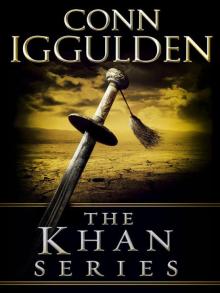 The Khan Series 5-Book Bundle
The Khan Series 5-Book Bundle Tollins 2: Dynamite Tales
Tollins 2: Dynamite Tales Tollins: Explosive Tales for Children
Tollins: Explosive Tales for Children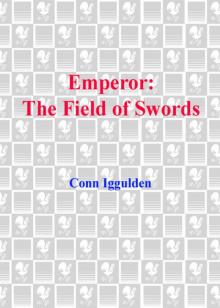 The Field of Swords
The Field of Swords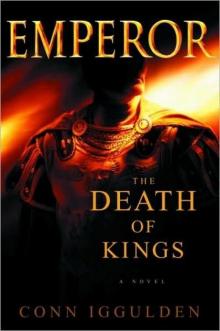 The Death of Kings
The Death of Kings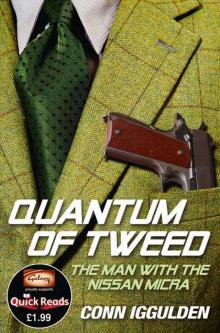 Quantum of Tweed: The Man With the Nissan Micra
Quantum of Tweed: The Man With the Nissan Micra Bones of the Hills
Bones of the Hills Genghis: Birth of an Empire
Genghis: Birth of an Empire The Gates of Rome
The Gates of Rome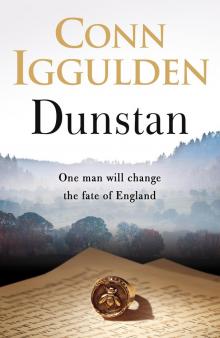 Dunstan
Dunstan Fig Tree
Fig Tree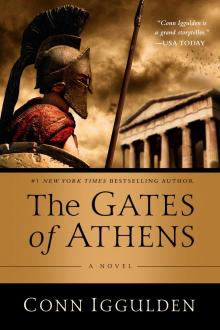 The Gates of Athens
The Gates of Athens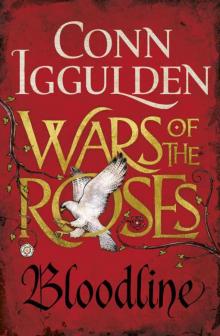 Stormbird
Stormbird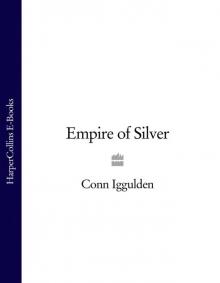 Khan: Empire of Silver
Khan: Empire of Silver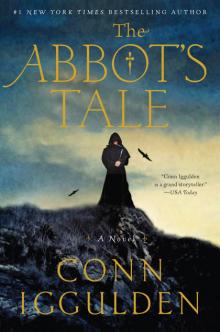 The Abbot's Tale
The Abbot's Tale Gengis: Lords of the Bow
Gengis: Lords of the Bow The Gods of War
The Gods of War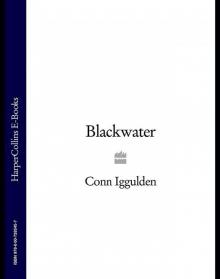 Blackwater
Blackwater Ravenspur: Rise of the Tudors
Ravenspur: Rise of the Tudors Wars of the Roses: Trinity (War of the Roses Book 2)
Wars of the Roses: Trinity (War of the Roses Book 2) The Gods of war e-4
The Gods of war e-4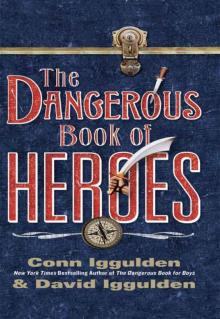 The Dangerous Book of Heroes
The Dangerous Book of Heroes Stormbird wotr-1
Stormbird wotr-1 Emperor: The Death of Kings
Emperor: The Death of Kings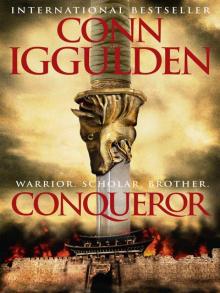 Conqueror (2011) c-5
Conqueror (2011) c-5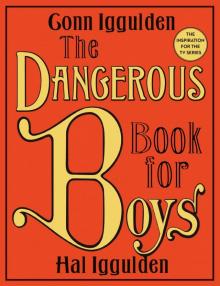 The Dangerous Book for Boys
The Dangerous Book for Boys Genghis Lords of the Bow
Genghis Lords of the Bow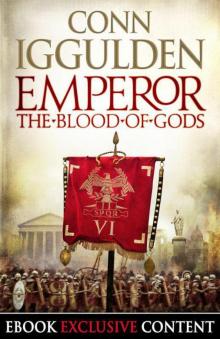 Emperor: The Blood of Gods (Special Edition) (Emperor Series, Book 5)
Emperor: The Blood of Gods (Special Edition) (Emperor Series, Book 5) The Emperor Series: Books 1-5
The Emperor Series: Books 1-5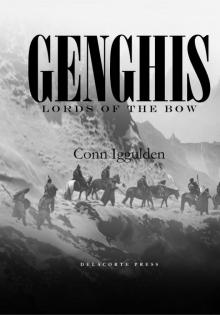 Lords of the Bow c-2
Lords of the Bow c-2 Lords of the Bow
Lords of the Bow Quantum of Tweed
Quantum of Tweed Wars of the Roses 01 - Stormbird
Wars of the Roses 01 - Stormbird Empire of Silver c-4
Empire of Silver c-4 Birth of an Empire
Birth of an Empire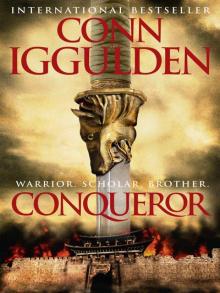 Conqueror (2011)
Conqueror (2011)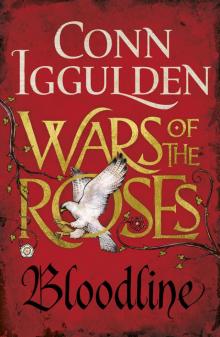 Wars of the Roses: Bloodline: Book 3 (The Wars of the Roses)
Wars of the Roses: Bloodline: Book 3 (The Wars of the Roses) Bones Of the Hills c-3
Bones Of the Hills c-3 Empire of Silver
Empire of Silver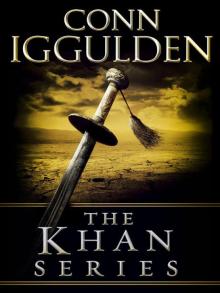 The Khan Series 5-Book Bundle: Genghis: Birth of an Empire, Genghis: Bones of the Hills, Genghis: Lords of the Bow, Khan: Empire of Silver, Conqueror
The Khan Series 5-Book Bundle: Genghis: Birth of an Empire, Genghis: Bones of the Hills, Genghis: Lords of the Bow, Khan: Empire of Silver, Conqueror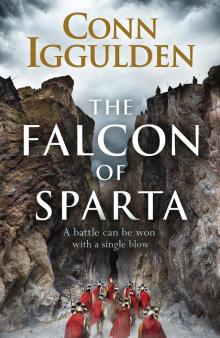 The Falcon of Sparta
The Falcon of Sparta Explosive Tales for Children
Explosive Tales for Children